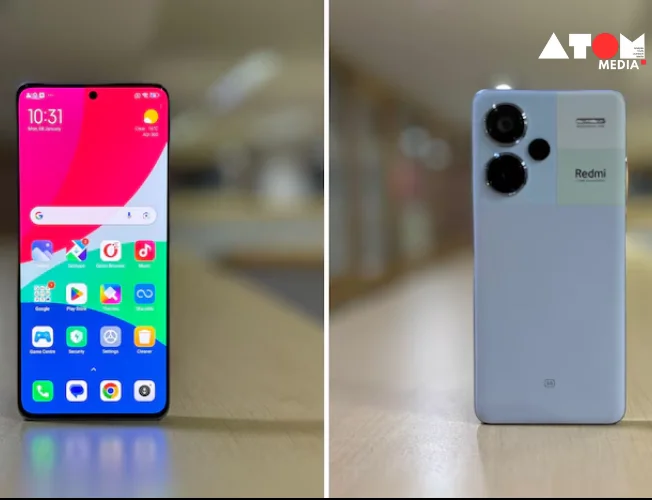Xiaomi has begun rolling out its latest user interface, HyperOS, to the Redmi Note 13 5G series. This marks a significant upgrade for the recently launched smartphones, promising a blend of enhanced performance, a vibrant new aesthetic, and a range of user-friendly features.
HyperOS Delivers Performance Boost and Feature Enhancements for Redmi Note 13 5G Series
The Redmi Note 13 5G series, which debuted in January 2024, is the first to receive the much-anticipated HyperOS update. This custom Android skin developed by Xiaomi is designed to elevate the user experience on these smartphones.
The update promises a noticeable performance improvement, making the Redmi Note 13 5G series even more responsive and efficient. Users can expect smoother operation, faster app loading times, and a more optimized overall experience.
Beyond Performance: A Look at HyperOS’s Feature Set
HyperOS boasts a plethora of new features designed to enhance user interaction and personalization. Here’s a closer look at some of the key highlights:
Vibrant Interface: HyperOS introduces a fresh and visually appealing interface with a focus on lively colors. This shift from the previous MIUI aesthetic injects a new energy into the user experience.
Mi Sans Font Integration: Xiaomi’s new Mi Sans font makes its debut with HyperOS. This versatile font offers global appeal with support for a staggering 600 languages and 20 writing systems, catering to a diverse user base.
Personalized Lock Screens: Users can now personalize their lock screens with a wider range of options. This allows for greater user expression and individuality on their devices.
Softer App Design: System apps within HyperOS receive a visual refresh with a softer, more textured feel. This subtle design change aims to improve usability and create a more intuitive user experience.
Homescreen+ and Split-Screen Multitasking: HyperOS introduces exciting features like HomeScreen+ support and split-screen layout capabilities. These functionalities empower users to personalize their home screen layout and seamlessly switch between apps, enhancing multitasking capabilities.
HyperOS Rollout Extends Beyond Redmi Note 13 5G Series
While the initial rollout focuses on the Redmi Note 13 5G series, Xiaomi has outlined its plans for wider HyperOS adoption in Q2 of 2024. A range of other Xiaomi devices are slated to receive the update, including the Xiaomi 11 Lite, Xiaomi 11i, Xiaomi 11i HyperCharge, Xiaomi 11T Pro, and Mi 11 Ultra. This signifies Xiaomi’s commitment to providing a unified and up-to-date user experience across its smartphone portfolio.
A Departure from MIUI: Xiaomi’s Vision for HyperOS
In 2023, Xiaomi announced its decision to transition from the familiar MIUI interface to HyperOS. This move represents the company’s vision for a cohesive user interface that can seamlessly integrate across its expanding ecosystem of smart devices. HyperOS aims to provide a consistent look and feel, along with optimized performance, for users who interact with Xiaomi smartphones, tablets, smart home devices, and potentially even future electric vehicles.
The Future of HyperOS: A Connected Ecosystem
The rollout of HyperOS marks a significant step forward for Xiaomi. It signifies the company’s commitment to user experience innovation and its vision for a more interconnected device ecosystem. As HyperOS becomes available on a wider range of Xiaomi devices, users can expect a more unified and intuitive experience across their smart technology landscape.
Read more: Marketing News, Advertising News, PR and Finance News, Digital News





